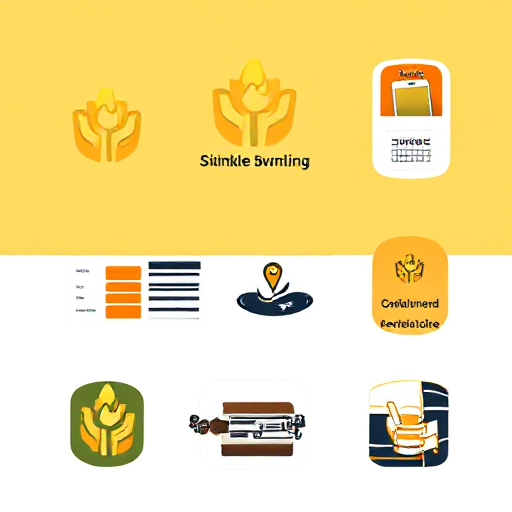Blogging vs. Portfolio: Which Platform Suits Your Needs?
When building an online presence, especially as a creative, freelancer, or entrepreneur, blogs and portfolios each offer unique advantages. Choosing between the two—or effectively combining both—can make a significant difference in showcasing your work, attracting clients, and establishing authority in your industry.
Find Out How To Make Money As A Full-Time Writer/Blogger Guide
What is a Blog?
A blog is an online space where individuals or businesses regularly publish articles, updates, and other content. Blogs can be used to share knowledge, express opinions, tell stories, or provide insights on a particular topic or industry. They are a popular way for businesses and professionals to connect with an audience, build credibility, and enhance SEO.
Why People Use Blogs:
- To Educate or Entertain: Sharing insights, tips, or experiences with readers.
- To Build Authority: Providing valuable information on a niche topic to establish expertise.
- To Drive Traffic: Regularly updated content helps improve search engine rankings.
- To Monetize Content: Many bloggers earn income through ads, sponsored content, or affiliate marketing.
What is a Portfolio?
A portfolio is an online showcase of an individual’s or business’s work, highlighting skills, completed projects, or notable accomplishments. Portfolios are especially valuable for creative professionals like designers, photographers, writers, or artists, as they offer a streamlined way to display examples of previous work to potential clients or employers.
How to Earn Money Online – The Ultimate Guide to Financial Freedom!
Why People Use Portfolios:
- To Showcase Work: Visual and text examples of completed projects.
- To Provide Professional Proof: Potential clients or employers can see past work quality.
- To Attract New Opportunities: Portfolios help professionals stand out in competitive fields.
- To Serve as an Online Resume: Portfolios can include testimonials, skills, and background.
Key Differences Between Blogs and Portfolios
1. Content Type
- Blog: Content is often written as articles, covering topics in depth, often educational or conversational.
- Portfolio: Primarily visual and project-based, showing examples of completed work and achievements.
2. Purpose and Audience Engagement
- Blog: Engages readers with fresh, informative content; ideal for those seeking continuous engagement.
- Portfolio: Primarily serves as a static showcase, appealing directly to those interested in hiring or collaborating.
3. SEO Benefits
- Blog: Blogs are highly effective for SEO as they can target keywords, answer common questions, and attract ongoing traffic.
- Portfolio: Portfolios are typically optimized around specific skills or services, but without regularly updated content, they may receive less organic search traffic.
4. Maintenance and Updates
- Blog: Requires consistent updates to keep readers engaged and improve SEO.
- Portfolio: Once created, a portfolio requires minimal updates, typically only when new projects are added.
Pros and Cons of Blogging
Pros:
- SEO Benefits: Regular updates can boost search rankings, making blogs effective for attracting organic traffic.
- Authority Building: Sharing knowledge builds trust and establishes the blogger as an expert.
- Community Engagement: Blogs allow for comments and social sharing, fostering a sense of community.
Cons:
- Time-Intensive: Blogs require regular posting and content creation, which can be demanding.
- Initial Slow Growth: Building an audience and gaining traction may take time.
- Ongoing Maintenance: Blogs need to be maintained and updated consistently to stay relevant.
Pros and Cons of Portfolios
Pros:
- Quickly Showcases Skills: Portfolios offer a straightforward, visually appealing way to display work.
- Professional Appeal: Ideal for clients or employers who want to see specific examples.
- Low Maintenance: Once set up, portfolios require minimal upkeep unless new work needs to be added.
Cons:
- Limited SEO Potential: Without regular updates, portfolios are less likely to rank for a variety of keywords.
- Less Audience Engagement: Portfolios lack the interactive and community-driven features of blogs.
- Not Suitable for Content Monetization: Portfolios are less flexible for generating income from ads or sponsored content.
Combining Blogging and Portfolios
Many creatives and freelancers effectively combine a blog with a portfolio to enjoy the best of both worlds. This combination allows them to showcase their work while also building a personal brand, sharing insights, and attracting organic traffic. For example:
- Designers or Photographers can use a blog to share insights into their creative process, attract traffic, and use a portfolio to show examples of their work.
- Writers or Consultants can share tips or industry insights on a blog, showcasing their expertise, while their portfolio presents their most impactful work.
How to Earn Money Online – The Ultimate Guide to Financial Freedom!
Choosing the Right Platform for Your Goals
Choose Blogging If:
- You want to regularly share insights, tips, or news with an audience.
- You’re looking to build authority in your industry or niche.
- You aim to drive traffic and potentially monetize content.
Choose a Portfolio If:
- You want a straightforward, professional showcase for specific skills or completed projects.
- You work in a visual or project-based field, like design, art, or photography.
- You’re primarily focused on attracting clients or employers who want to see examples of your work.
Use Both If:
- You want to establish expertise while also showcasing your best work to potential clients.
- You enjoy creating regular content to engage an audience but also need a professional presentation for specific achievements.
How to Earn Money Online – The Ultimate Guide to Financial Freedom!
Both blogging and portfolios serve valuable purposes in building an online presence. Blogs are ideal for attracting a broad audience, establishing authority, and fostering ongoing engagement. Portfolios, on the other hand, provide a polished showcase of your work, offering a professional appeal for prospective clients and employers. By understanding your goals, resources, and audience, you can choose the right platform or create a combination that fully supports your professional objectives.







